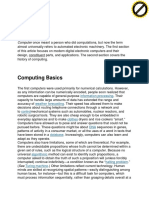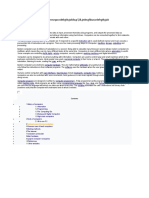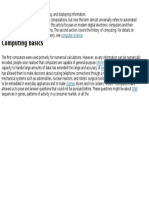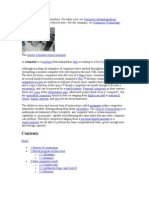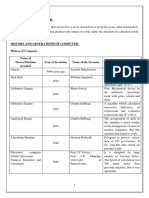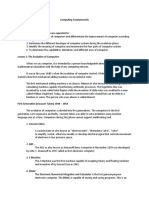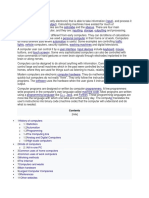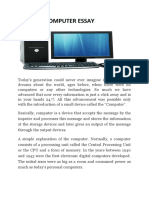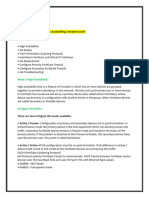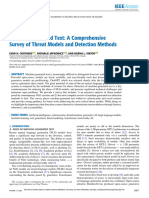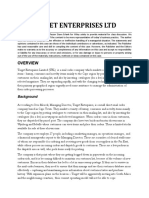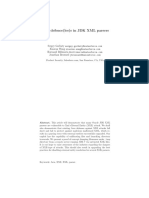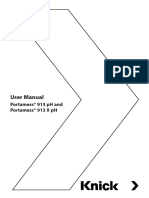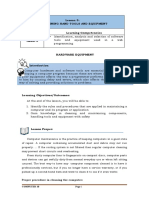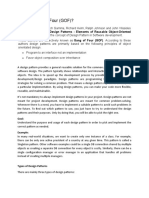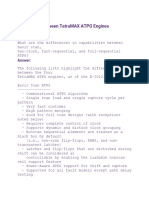0% found this document useful (0 votes)
31 views2 pagesA Computer
A computer is an electronic device that can store, process, and display digital information. It can perform numerical calculations and general purpose information processing by encoding all data numerically. Computers have limitations in their ability to solve certain logical problems, recognize some spatial patterns, and fully understand natural language interactions due to lacking human common knowledge and context.
Uploaded by
aleenamushtaq64Copyright
© © All Rights Reserved
We take content rights seriously. If you suspect this is your content, claim it here.
Available Formats
Download as DOCX, PDF, TXT or read online on Scribd
0% found this document useful (0 votes)
31 views2 pagesA Computer
A computer is an electronic device that can store, process, and display digital information. It can perform numerical calculations and general purpose information processing by encoding all data numerically. Computers have limitations in their ability to solve certain logical problems, recognize some spatial patterns, and fully understand natural language interactions due to lacking human common knowledge and context.
Uploaded by
aleenamushtaq64Copyright
© © All Rights Reserved
We take content rights seriously. If you suspect this is your content, claim it here.
Available Formats
Download as DOCX, PDF, TXT or read online on Scribd
/ 2


